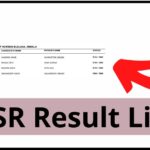Planning for your future is important, and one great way to do that is by using a Registered Retirement Savings Plan (RRSP). But figuring out how to make the best choices for your RRSP can be tricky. This guide will help you understand what an RRSP is, why it’s important, and how to make smart decisions about your retirement savings. Let’s dive in!

What is an RRSP?
An RRSP is a special savings account in Canada designed to help you save for retirement. The money you put into an RRSP is tax-deductible, which means it can lower the amount of tax you have to pay. Plus, your money can grow tax-free until you withdraw it, which usually happens when you retire.
Why is an RRSP Important?
Saving for retirement is crucial because it ensures you have enough money to live comfortably when you’re no longer working. Here are some key benefits of an RRSP:
- Tax Savings: Contributions to your RRSP can reduce your taxable income.
- Tax-Free Growth: Investments in your RRSP grow without being taxed until withdrawal.
- Retirement Security: Helps you build a nest egg for your future.
Old Age Security (OAS) Changes 2024: New Eligibility and Payment Increases
Breaking News: Canada Faces Immigration Crisis 2024 | IRCC In trouble
The RRSP vs. TFSA Dilemma
One common question is whether to invest in an RRSP or a Tax-Free Savings Account (TFSA). Here’s a simple comparison to help you decide:
RRSP:
- Contributions are tax-deductible.
- Withdrawals are taxed.
- Best for high-income earners looking for immediate tax savings.
TFSA:
- Contributions are not tax-deductible.
- Withdrawals are tax-free.
- Great for lower-income earners or those needing flexible access to funds.
How Much Should You Contribute?
Your RRSP contribution limit is 18% of your previous year’s earned income, up to a maximum amount set by the government. For 2024, the limit is $31,560. Here’s how to decide how much to contribute:
- Assess Your Income: Higher income means more tax savings with an RRSP.
- Consider Your Age: Younger people might benefit more from a TFSA initially.
- Plan for the Future: Think about your retirement goals and current financial situation.
RRSP Contribution Limits
| Year | Maximum Contribution Limit |
|---|---|
| 2023 | $30,780 |
| 2024 | $31,560 |
When to Start Contributing to Registered Retirement Savings Plan
It’s never too early or too late to start contributing to your RRSP. Here are some tips based on your stage in life:
Early Career:
- Prioritize a TFSA if your income is below $40,000.
- Carry forward RRSP contribution room for future use.
Mid-Career:
- Maximize your RRSP contributions to get significant tax savings.
- Balance contributions between RRSP and TFSA.
Approaching Retirement:
- Focus on managing your RRSP withdrawals to minimize taxes.
- Consider moving funds to a TFSA for tax-free growth.
Managing a Large RRSP
Having a large RRSP is great, but it can also lead to higher taxes in retirement. Here are some strategies to manage it effectively:
- Reorganize Your Investments: Keep interest-bearing investments like bonds in your RRSP and dividends in non-registered accounts.
- Tap into Your RRSP Early: Withdraw funds during low-income years to avoid higher taxes later.
- Use a TFSA: Move some RRSP funds to a TFSA to benefit from tax-free growth.
- Life Insurance: Consider a joint last-to-die policy to cover potential tax liabilities.
- Pension Income Splitting: Share pension income with your spouse to lower taxes.
Practical Tips for Your RRSP
- Start Early: The sooner you start, the more time your money has to grow.
- Regular Contributions: Make regular contributions, even if they’re small.
- Diversify Investments: Spread your investments across different types (stocks, bonds, GICs) to reduce risk.
- Review Annually: Check your RRSP regularly to ensure it aligns with your goals.
- Consult an Advisor: Talk to a financial advisor to make informed decisions.
Real-Life Success Story
Meet Sarah, a 35-year-old teacher who started contributing to her RRSP at age 25. By consistently contributing a small amount each month and taking advantage of her employer’s matching program, Sarah’s RRSP has grown significantly. She also prioritized her TFSA during years when her income was lower, maximizing her tax-free savings. Now, Sarah feels confident about her financial future and plans to retire comfortably at 60.
Conclusion
Making the right choices for your RRSP is key to securing your financial future. By understanding the benefits, knowing when and how much to contribute, and managing your RRSP wisely, you can ensure a comfortable and stress-free retirement. Remember, it’s always a good idea to consult with a financial advisor to tailor your RRSP strategy to your unique needs. Happy saving!





![SAMS Odisha Plus 3 2nd Selection List 2024 [Today], Download College allotment letter](https://lkouniexam.in/wp-content/uploads/2024/07/SAMS-3-2nd-Admission-Merit-List-2024-Released-150x150.webp)
